2026届高考英语二轮复习:读后续写 如何写对话?课件 (共20张)
文档属性
| 名称 | 2026届高考英语二轮复习:读后续写 如何写对话?课件 (共20张) | 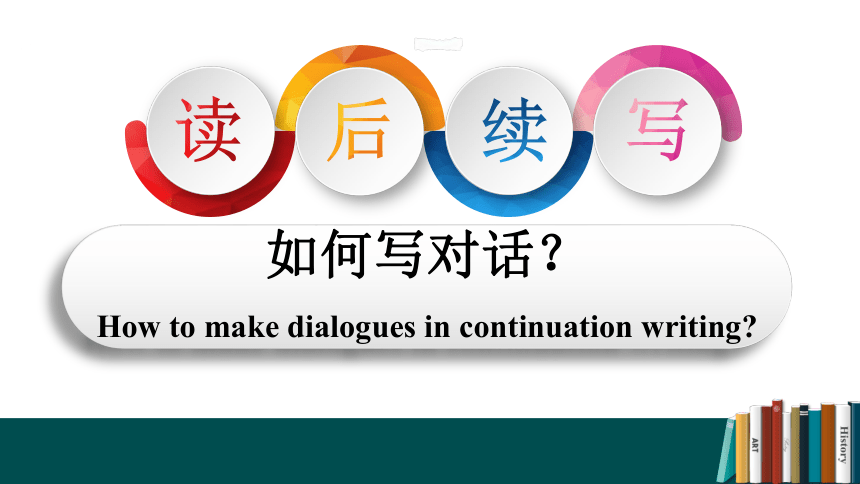 | |
| 格式 | pptx | ||
| 文件大小 | 434.7KB | ||
| 资源类型 | 教案 | ||
| 版本资源 | 通用版 | ||
| 科目 | 英语 | ||
| 更新时间 | 2025-06-22 21:39:42 | ||
图片预览

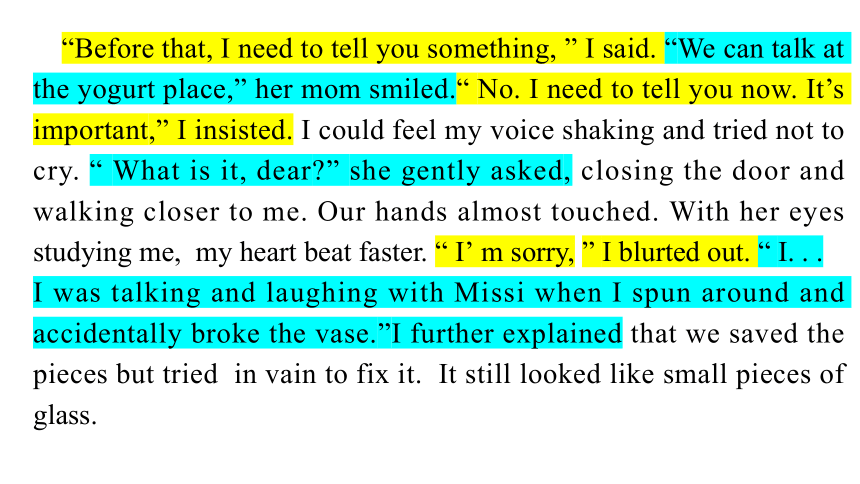
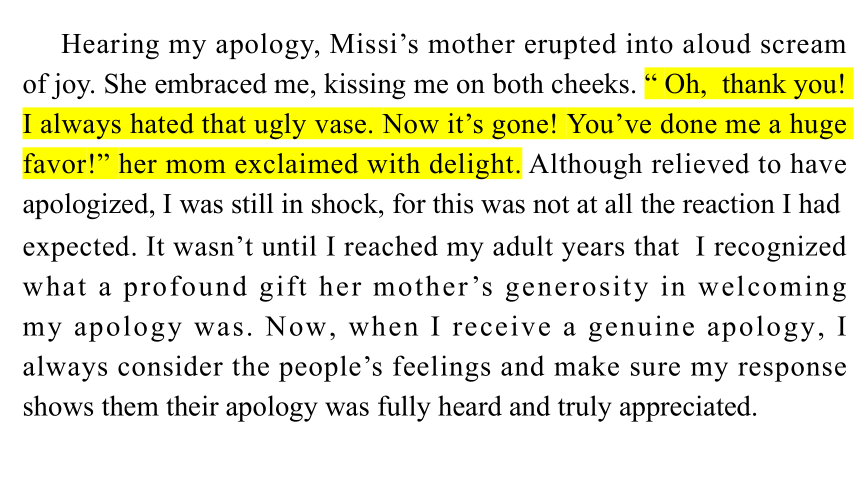
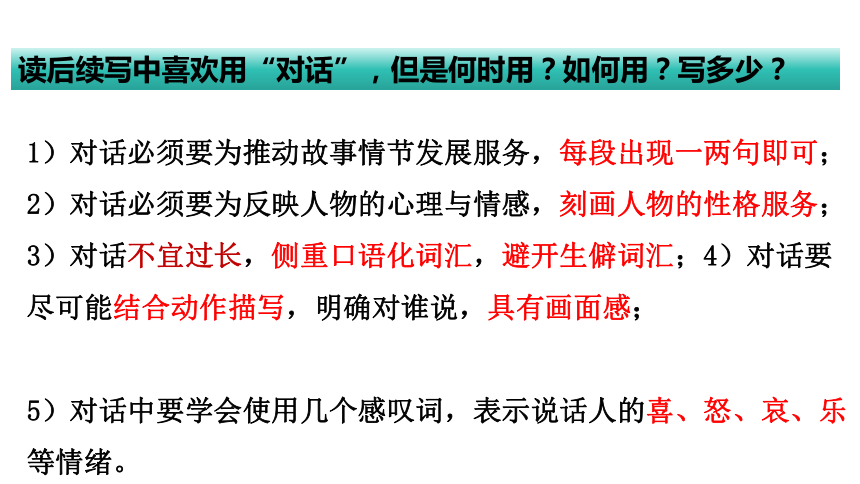
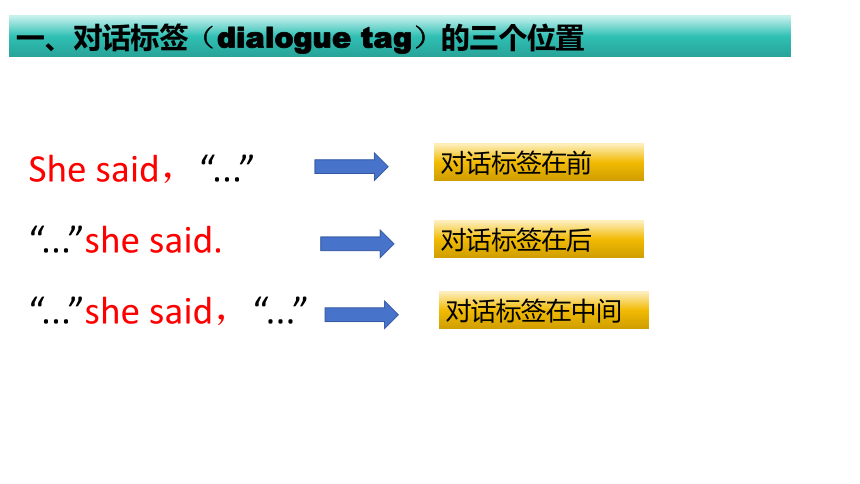
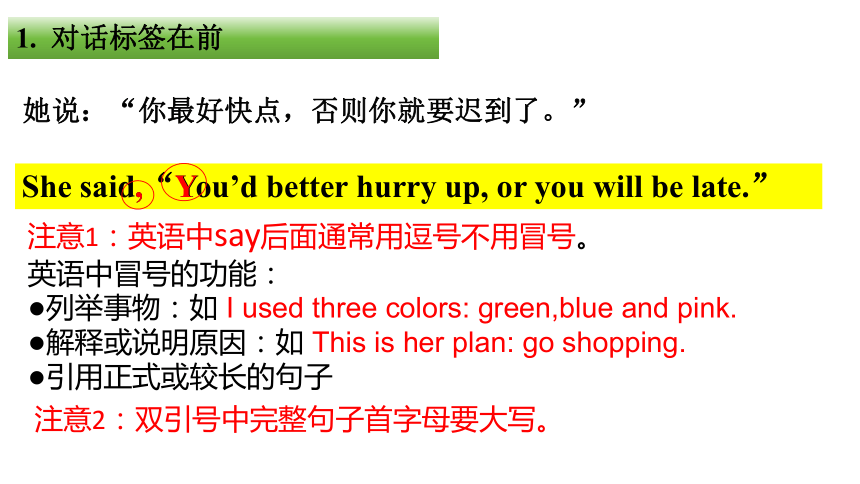
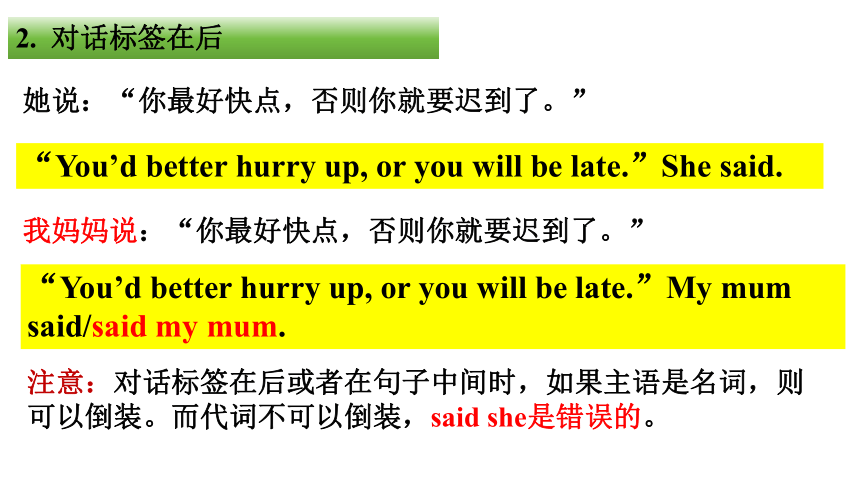
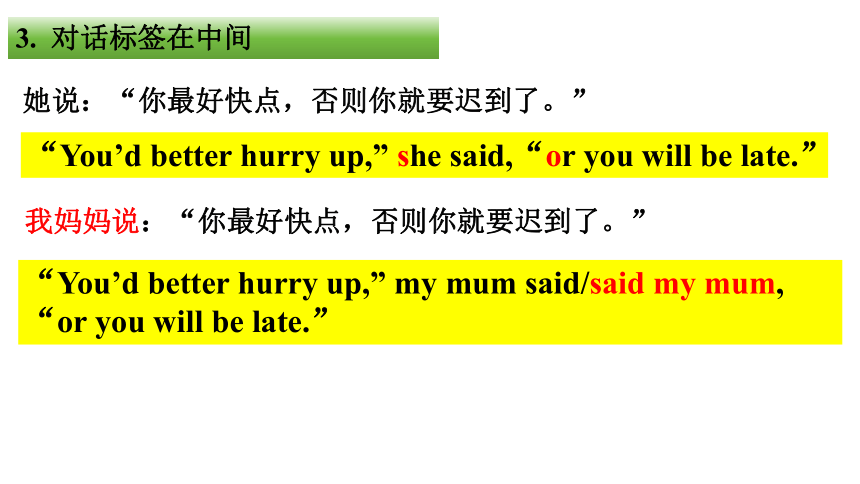
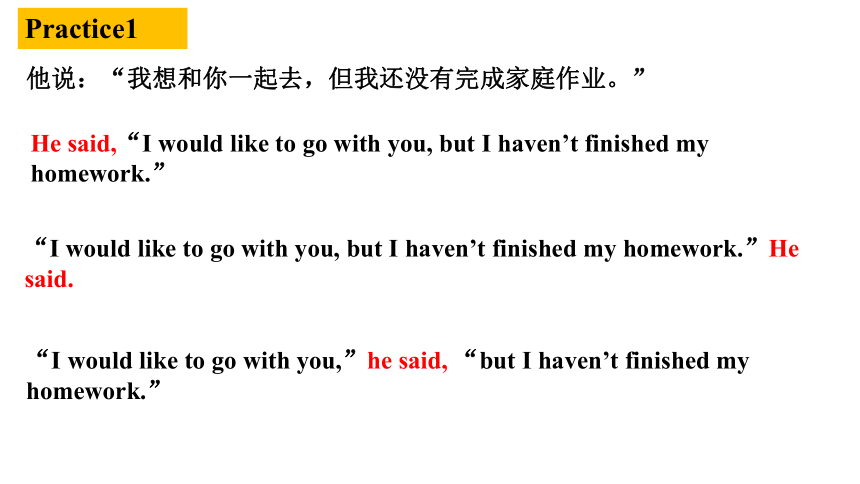
文档简介
(共20张PPT)
如何写对话?
How to make dialogues in continuation writing
读
后
续
写
__________
“Before that, I need to tell you something, ” I said. “We can talk at the yogurt place,” her mom smiled.“ No. I need to tell you now. It’s important,” I insisted. I could feel my voice shaking and tried not to cry. “ What is it, dear ” she gently asked, closing the door and walking closer to me. Our hands almost touched. With her eyes studying me, my heart beat faster. “ I’ m sorry, ” I blurted out. “ I. . .
I was talking and laughing with Missi when I spun around and accidentally broke the vase.”I further explained that we saved the pieces but tried in vain to fix it. It still looked like small pieces of glass.
Hearing my apology, Missi’s mother erupted into aloud scream of joy. She embraced me, kissing me on both cheeks. “ Oh, thank you! I always hated that ugly vase. Now it’s gone! You’ve done me a huge favor!” her mom exclaimed with delight. Although relieved to have apologized, I was still in shock, for this was not at all the reaction I had
expected. It wasn’t until I reached my adult years that I recognized what a profound gift her mother’s generosity in welcoming my apology was. Now, when I receive a genuine apology, I always consider the people’s feelings and make sure my response shows them their apology was fully heard and truly appreciated.
读后续写中喜欢用“对话”,但是何时用?如何用?写多少?
1)对话必须要为推动故事情节发展服务,每段出现一两句即可;2)对话必须要为反映人物的心理与情感,刻画人物的性格服务;3)对话不宜过长,侧重口语化词汇,避开生僻词汇;4)对话要尽可能结合动作描写,明确对谁说,具有画面感;
5)对话中要学会使用几个感叹词,表示说话人的喜、怒、哀、乐等情绪。
一、对话标签(dialogue tag)的三个位置
She said,“...”
“...”she said.
“...”she said,“...”
对话标签在前
对话标签在后
对话标签在中间
1. 对话标签在前
她说:“你最好快点,否则你就要迟到了。”
She said,“You’d better hurry up, or you will be late.”
注意1:英语中say后面通常用逗号不用冒号。
英语中冒号的功能:
●列举事物:如 I used three colors: green,blue and pink.
●解释或说明原因:如 This is her plan: go shopping.
●引用正式或较长的句子
,
Y
注意2:双引号中完整句子首字母要大写。
2. 对话标签在后
她说:“你最好快点,否则你就要迟到了。”
“You’d better hurry up, or you will be late.”She said.
我妈妈说:“你最好快点,否则你就要迟到了。”
“You’d better hurry up, or you will be late.”My mum said/said my mum.
注意:对话标签在后或者在句子中间时,如果主语是名词,则可以倒装。而代词不可以倒装,said she是错误的。
3. 对话标签在中间
她说:“你最好快点,否则你就要迟到了。”
“You’d better hurry up,” she said,“or you will be late.”
我妈妈说:“你最好快点,否则你就要迟到了。”
“You’d better hurry up,” my mum said/said my mum,
“or you will be late.”
Practice1
他说:“我想和你一起去,但我还没有完成家庭作业。”
He said,“I would like to go with you, but I haven’t finished my homework.”
“I would like to go with you, but I haven’t finished my homework.”He said.
“I would like to go with you,”he said, “but I haven’t finished my homework.”
你是否只会用said呢?
“Before that, I need to tell you something, ” I said. “We can talk at the yogurt place,” her mom smiled.“ No. I need to tell you now. It’s important,” I insisted. I could feel my voice shaking and tried not to cry. “ What is it, dear ” she gently asked, closing the door and walking closer to me. Our hands almost touched. With her eyes studying me, my heart beat faster. “ I’ m sorry, ” I blurted out. “ I. . .
I was talking and laughing with Missi when I spun around and accidentally broke the vase.”I further explained that we saved the pieces but tried in vain to fix it. It still looked like small pieces of glass.
二、对话标签中常用的“说”
不要只用said!
大喊;尖叫:shouted, exclaimed,
roared, yelled, screamed
咕哝;低声说:murmured
轻声说;耳语:whispered
安慰地说:comforted
坚持地说:insisted
笑着说:smiled, laughed
叹气:sighed
开玩笑地说:teased, joked
继续说: continued
强调说:emphasized
回忆道:remembered, recalled
最后说/总结说:concluded
三、写“对话”的四个小技巧
在对话标签中加入语气、嗓音、情感让你的描写更生动传神。
基本结构:in a/an+adj(如firm/rude/sad)+tone
in a tone of +n.
①第一种:加语气
eg.“I would love to,” said Emily in a pleasant tone.
“我很乐意这样做,”艾米丽用一种愉快的语气说。
如:
in a surprising tone= in a tone of surprise用一种惊讶的语气
in a curious tone=in a tone of curiosity用一种好奇的语气
in an impatient tone=in a tone of impatience用一种不耐烦的语气
in a tone of command用一种命令的语气
② 第二种:加嗓音
eg. “I didn’t mean to,” she murmured in a low voice. “我不是故意的,”她低声说。
基本结构:in a/an+adj.+voice
如:
in a high /low/ sweet/ loud/ soft/ weak voice
用一个高/低/甜/响亮/软/弱的声音
eg.“I...I.. don’t think I’m right for the part,”I replied with embarrassment.
“我...我..认为我不适合这个角色,”我尴尬地回答。
③第三种:加情感
基本结构:with +情感名词(excitement/curiosity/guilt/embarrassment)
如:
with excitement (伴随着)激动地
with joy/delight 高兴地
④第四种:加副词
=Firmly, I answered, “I will never do that again.”
eg.“I will never do that again,” I answered firmly.
“我再也不会那样做了,”我坚定地回答。
eg. She said hopefully,“We will never give up.”
他充满希望地说:“我们绝不会放弃的。”
基本结构: sb +said+adv.
adv.,+sb said.
Practice 2
1.”你一定是Annie.”他友好地说。
2.她低声说道:“我不是故意的。”
3.“这是真的吗?”他惊讶地嘀咕道。
4.他生气地大喊:“这不公平!”
5.她低下头说到:“对不起”
6.Rose指着窗户兴奋地大喊:“看!”
1.”你一定是Annie.”他友好地说。
2.她低声说道:“我不是故意的。”
3.“这是真的吗?”他惊讶地嘀咕道。
4.他生气地大喊:“这不公平!”
5.她低下头说到:“对不起”
6.Rose指着窗户兴奋地大喊:“看!”
“You must be Annie,” he said in a friendly tone.
She murmured in a low voice, “I didn’t mean to.”
“Is it true ” he whispered with astonishment.
He exclaimed angrily,“It isn’t fair !”
With her head down, she said, “Sorry.”
“Look!” Rose pointed out the window and screamed with excitement.
Self-assessment(自我评价):
After this class, I am able to:
Criteria Self-Evaluation Yes( ) No( )
get to know the role of dialogues in continuation writing
use dialogue tags correctly in context
use different verbs to take place of “said” in concrete context
make dialogues more vivid with some helpful expressions
express ideas properly according to the context in continuation writing
Homework:
1.Finish practice 2 and write the dialogues on your exercise book.
2.Rewrite the continuation paragraphs of the test paper based on the skills in this class.(optional)
Practice makes perfect!
如何写对话?
How to make dialogues in continuation writing
读
后
续
写
__________
“Before that, I need to tell you something, ” I said. “We can talk at the yogurt place,” her mom smiled.“ No. I need to tell you now. It’s important,” I insisted. I could feel my voice shaking and tried not to cry. “ What is it, dear ” she gently asked, closing the door and walking closer to me. Our hands almost touched. With her eyes studying me, my heart beat faster. “ I’ m sorry, ” I blurted out. “ I. . .
I was talking and laughing with Missi when I spun around and accidentally broke the vase.”I further explained that we saved the pieces but tried in vain to fix it. It still looked like small pieces of glass.
Hearing my apology, Missi’s mother erupted into aloud scream of joy. She embraced me, kissing me on both cheeks. “ Oh, thank you! I always hated that ugly vase. Now it’s gone! You’ve done me a huge favor!” her mom exclaimed with delight. Although relieved to have apologized, I was still in shock, for this was not at all the reaction I had
expected. It wasn’t until I reached my adult years that I recognized what a profound gift her mother’s generosity in welcoming my apology was. Now, when I receive a genuine apology, I always consider the people’s feelings and make sure my response shows them their apology was fully heard and truly appreciated.
读后续写中喜欢用“对话”,但是何时用?如何用?写多少?
1)对话必须要为推动故事情节发展服务,每段出现一两句即可;2)对话必须要为反映人物的心理与情感,刻画人物的性格服务;3)对话不宜过长,侧重口语化词汇,避开生僻词汇;4)对话要尽可能结合动作描写,明确对谁说,具有画面感;
5)对话中要学会使用几个感叹词,表示说话人的喜、怒、哀、乐等情绪。
一、对话标签(dialogue tag)的三个位置
She said,“...”
“...”she said.
“...”she said,“...”
对话标签在前
对话标签在后
对话标签在中间
1. 对话标签在前
她说:“你最好快点,否则你就要迟到了。”
She said,“You’d better hurry up, or you will be late.”
注意1:英语中say后面通常用逗号不用冒号。
英语中冒号的功能:
●列举事物:如 I used three colors: green,blue and pink.
●解释或说明原因:如 This is her plan: go shopping.
●引用正式或较长的句子
,
Y
注意2:双引号中完整句子首字母要大写。
2. 对话标签在后
她说:“你最好快点,否则你就要迟到了。”
“You’d better hurry up, or you will be late.”She said.
我妈妈说:“你最好快点,否则你就要迟到了。”
“You’d better hurry up, or you will be late.”My mum said/said my mum.
注意:对话标签在后或者在句子中间时,如果主语是名词,则可以倒装。而代词不可以倒装,said she是错误的。
3. 对话标签在中间
她说:“你最好快点,否则你就要迟到了。”
“You’d better hurry up,” she said,“or you will be late.”
我妈妈说:“你最好快点,否则你就要迟到了。”
“You’d better hurry up,” my mum said/said my mum,
“or you will be late.”
Practice1
他说:“我想和你一起去,但我还没有完成家庭作业。”
He said,“I would like to go with you, but I haven’t finished my homework.”
“I would like to go with you, but I haven’t finished my homework.”He said.
“I would like to go with you,”he said, “but I haven’t finished my homework.”
你是否只会用said呢?
“Before that, I need to tell you something, ” I said. “We can talk at the yogurt place,” her mom smiled.“ No. I need to tell you now. It’s important,” I insisted. I could feel my voice shaking and tried not to cry. “ What is it, dear ” she gently asked, closing the door and walking closer to me. Our hands almost touched. With her eyes studying me, my heart beat faster. “ I’ m sorry, ” I blurted out. “ I. . .
I was talking and laughing with Missi when I spun around and accidentally broke the vase.”I further explained that we saved the pieces but tried in vain to fix it. It still looked like small pieces of glass.
二、对话标签中常用的“说”
不要只用said!
大喊;尖叫:shouted, exclaimed,
roared, yelled, screamed
咕哝;低声说:murmured
轻声说;耳语:whispered
安慰地说:comforted
坚持地说:insisted
笑着说:smiled, laughed
叹气:sighed
开玩笑地说:teased, joked
继续说: continued
强调说:emphasized
回忆道:remembered, recalled
最后说/总结说:concluded
三、写“对话”的四个小技巧
在对话标签中加入语气、嗓音、情感让你的描写更生动传神。
基本结构:in a/an+adj(如firm/rude/sad)+tone
in a tone of +n.
①第一种:加语气
eg.“I would love to,” said Emily in a pleasant tone.
“我很乐意这样做,”艾米丽用一种愉快的语气说。
如:
in a surprising tone= in a tone of surprise用一种惊讶的语气
in a curious tone=in a tone of curiosity用一种好奇的语气
in an impatient tone=in a tone of impatience用一种不耐烦的语气
in a tone of command用一种命令的语气
② 第二种:加嗓音
eg. “I didn’t mean to,” she murmured in a low voice. “我不是故意的,”她低声说。
基本结构:in a/an+adj.+voice
如:
in a high /low/ sweet/ loud/ soft/ weak voice
用一个高/低/甜/响亮/软/弱的声音
eg.“I...I.. don’t think I’m right for the part,”I replied with embarrassment.
“我...我..认为我不适合这个角色,”我尴尬地回答。
③第三种:加情感
基本结构:with +情感名词(excitement/curiosity/guilt/embarrassment)
如:
with excitement (伴随着)激动地
with joy/delight 高兴地
④第四种:加副词
=Firmly, I answered, “I will never do that again.”
eg.“I will never do that again,” I answered firmly.
“我再也不会那样做了,”我坚定地回答。
eg. She said hopefully,“We will never give up.”
他充满希望地说:“我们绝不会放弃的。”
基本结构: sb +said+adv.
adv.,+sb said.
Practice 2
1.”你一定是Annie.”他友好地说。
2.她低声说道:“我不是故意的。”
3.“这是真的吗?”他惊讶地嘀咕道。
4.他生气地大喊:“这不公平!”
5.她低下头说到:“对不起”
6.Rose指着窗户兴奋地大喊:“看!”
1.”你一定是Annie.”他友好地说。
2.她低声说道:“我不是故意的。”
3.“这是真的吗?”他惊讶地嘀咕道。
4.他生气地大喊:“这不公平!”
5.她低下头说到:“对不起”
6.Rose指着窗户兴奋地大喊:“看!”
“You must be Annie,” he said in a friendly tone.
She murmured in a low voice, “I didn’t mean to.”
“Is it true ” he whispered with astonishment.
He exclaimed angrily,“It isn’t fair !”
With her head down, she said, “Sorry.”
“Look!” Rose pointed out the window and screamed with excitement.
Self-assessment(自我评价):
After this class, I am able to:
Criteria Self-Evaluation Yes( ) No( )
get to know the role of dialogues in continuation writing
use dialogue tags correctly in context
use different verbs to take place of “said” in concrete context
make dialogues more vivid with some helpful expressions
express ideas properly according to the context in continuation writing
Homework:
1.Finish practice 2 and write the dialogues on your exercise book.
2.Rewrite the continuation paragraphs of the test paper based on the skills in this class.(optional)
Practice makes perfect!
